Canon Powershot V10 review – dinky, different, dated
The Canon Powershot V10 is a first-generation camera that’s designed specifically for vlogging, offering 4K/30p and Full HD 60p video recording and 20MP JPEG images, plus a different user experience to a smartphone or more all-purpose cameras from the likes of Sony.
It packs the same 1-inch sensor as the Canon Powershot G7 X III from 2019, but has a fixed 18mm F2.8 lens which means it also comes up against the Sony ZV-1F. Unlike those cameras, the design is unashamedly focused on vlogging – but does the Powershot V10 have what it takes to cement its place among the best vlogging cameras? Read on to find out.
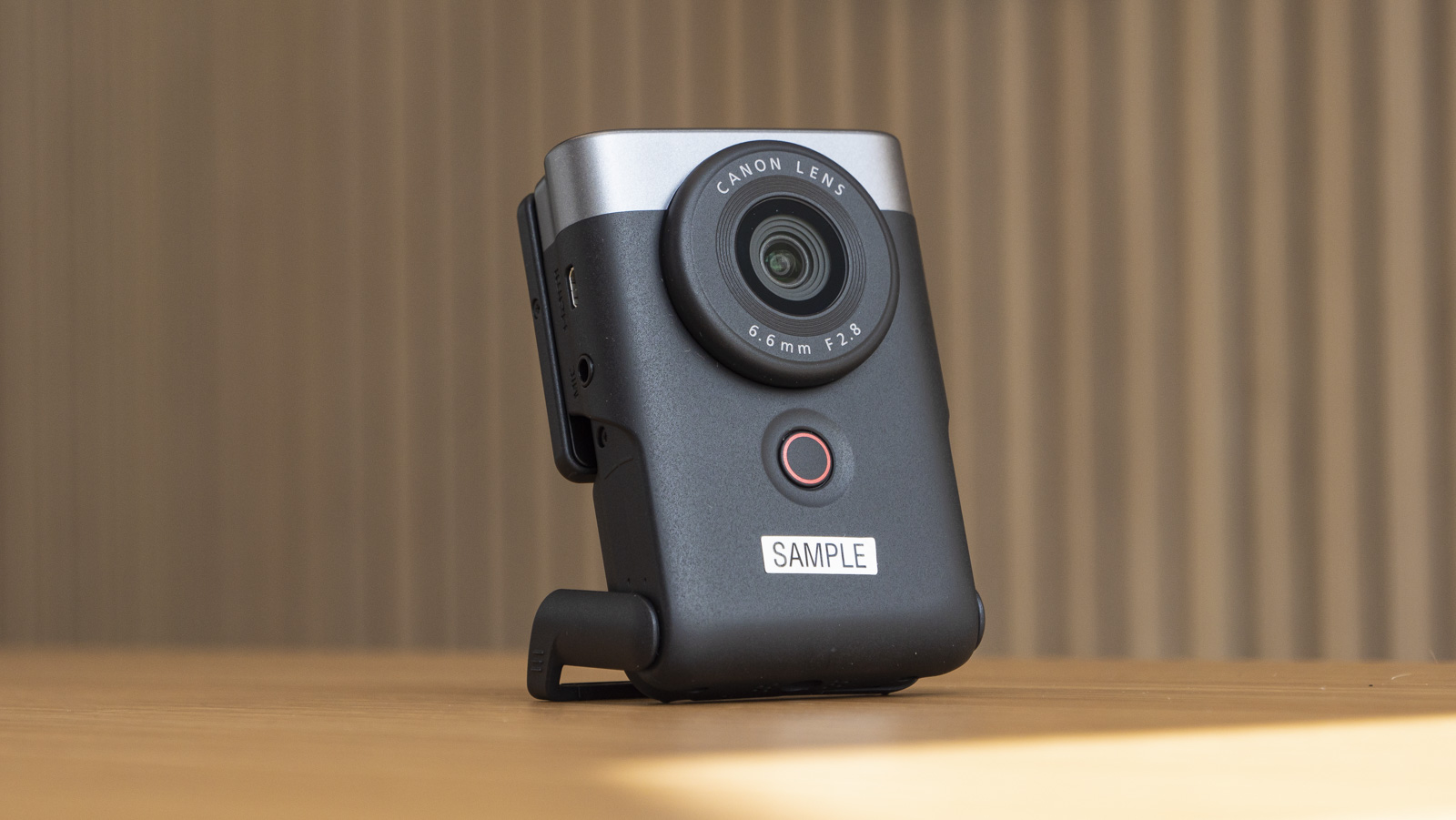
Canon Powershot V10: release date and price
- $399 / £429 / AU$699 for the vlogging kit
- Advanced vlogging kit for Europe only costs £459
The Canon Powershot V10 is available from June 2023, priced at $399 / £429 / AU$699 for the Vlogging kit, which includes a rubber lens cap made by SmallRig, and magnetic windshields for the stereo mics on the top of the camera.
In Europe only there’s also an Advanced Vlogging kit, which additionally includes a SmallRig cage, priced at £459. We were told that this was the first time Canon had partnered with the accessories maker ahead of a product launch to produce compatible accessories.
Canon Powershot V10: design
- Built-in fold-out stand means no tripod needed
- Simplified custom user interface
- Fixed 18mm ultra-wide lens
Nestled in the palm of my hand, the Canon Powershot V10 weighs in at mere 211g and offers a completely different user experience to most other vlogging cameras – for better and for worse.
It’s certainly a curious camera. The first thing I’m drawn to is the flip-up 2-inch touchscreen, and tucked inside that a neat built-in fold-out stand. The stand is really sturdy, and I can already see how it removes the need to carry and set up tripods and other mounts, and makes life with a camera pointed at yourself that much easier.
I’m not a content creator myself, but know all too well the challenge of precariously balancing a phone for hands-free selfies (of course optional phone stands are available). Whether you’re recording yourself playing an instrument, or cooking, or doing whatever you want to share online hands-free, the V10 simplifies the process.
The display is in 3:2 aspect ratio – and that’s the aspect ratio the sensor uses for photography, but for 16:9 video recording there’s a black border on the top and bottom of the frame, which does give on-screen options a little room to breathe.
The front of the camera is dominated by a chunky record button and bulbous 18mm F2.8 lens, which Canon says becomes 19mm for photography. You can’t zoom in or out, but a fixed ultra-wide lens is what you need for vlogging; if you want to get closer, the camera itself needs to move.
A press of the touchscreen reveals four video recording modes: regular movie shooting, Skin Smoothing, (digital) Image Stabilization video, and manual exposure video. These modes cover all bases, and the ultra-wide lens makes all the more sense for run-and-gun videos given that digital image stabilization narrows the field of view a little bit (there are no official numbers on the severity, but it’s minor).
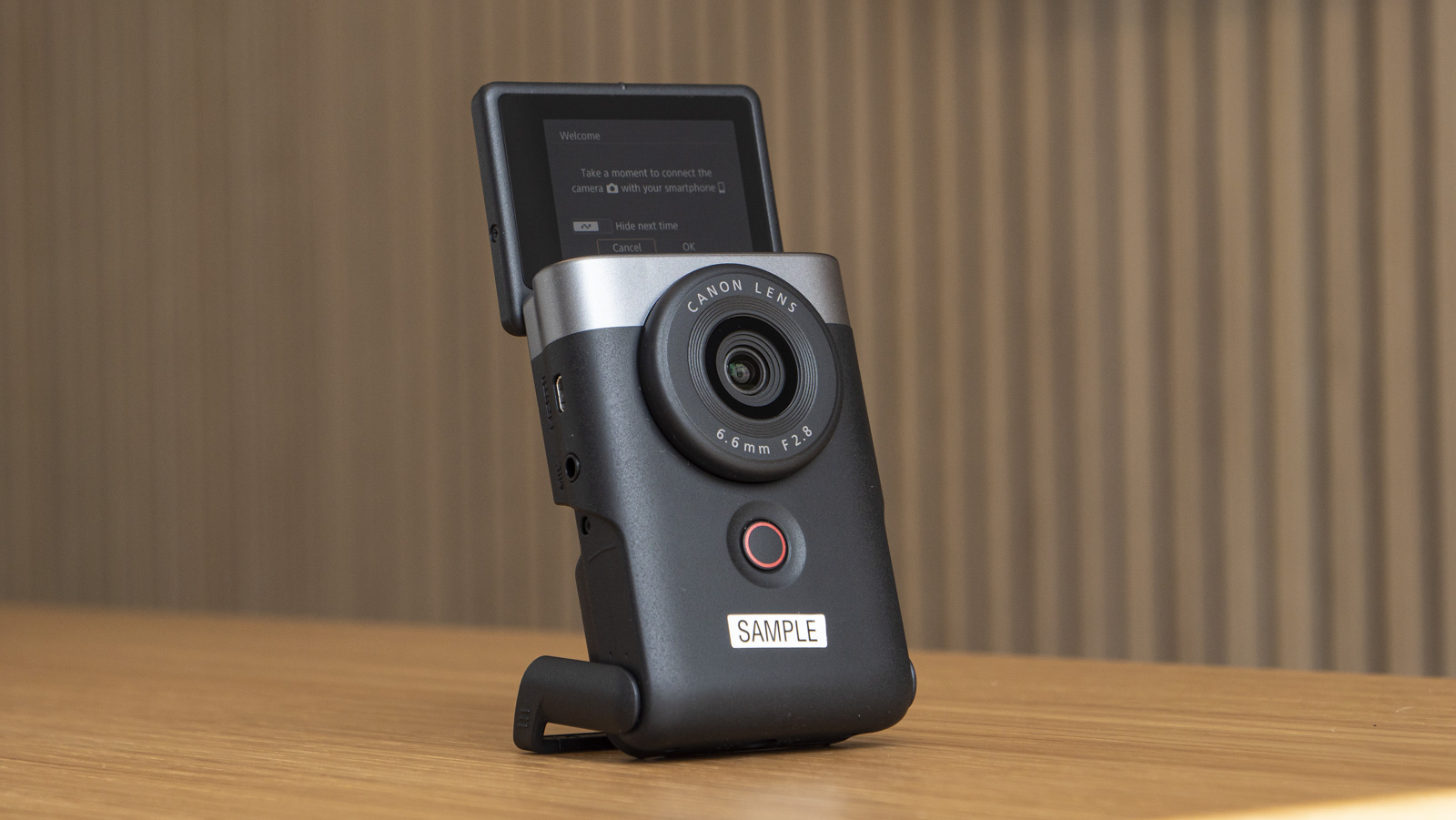
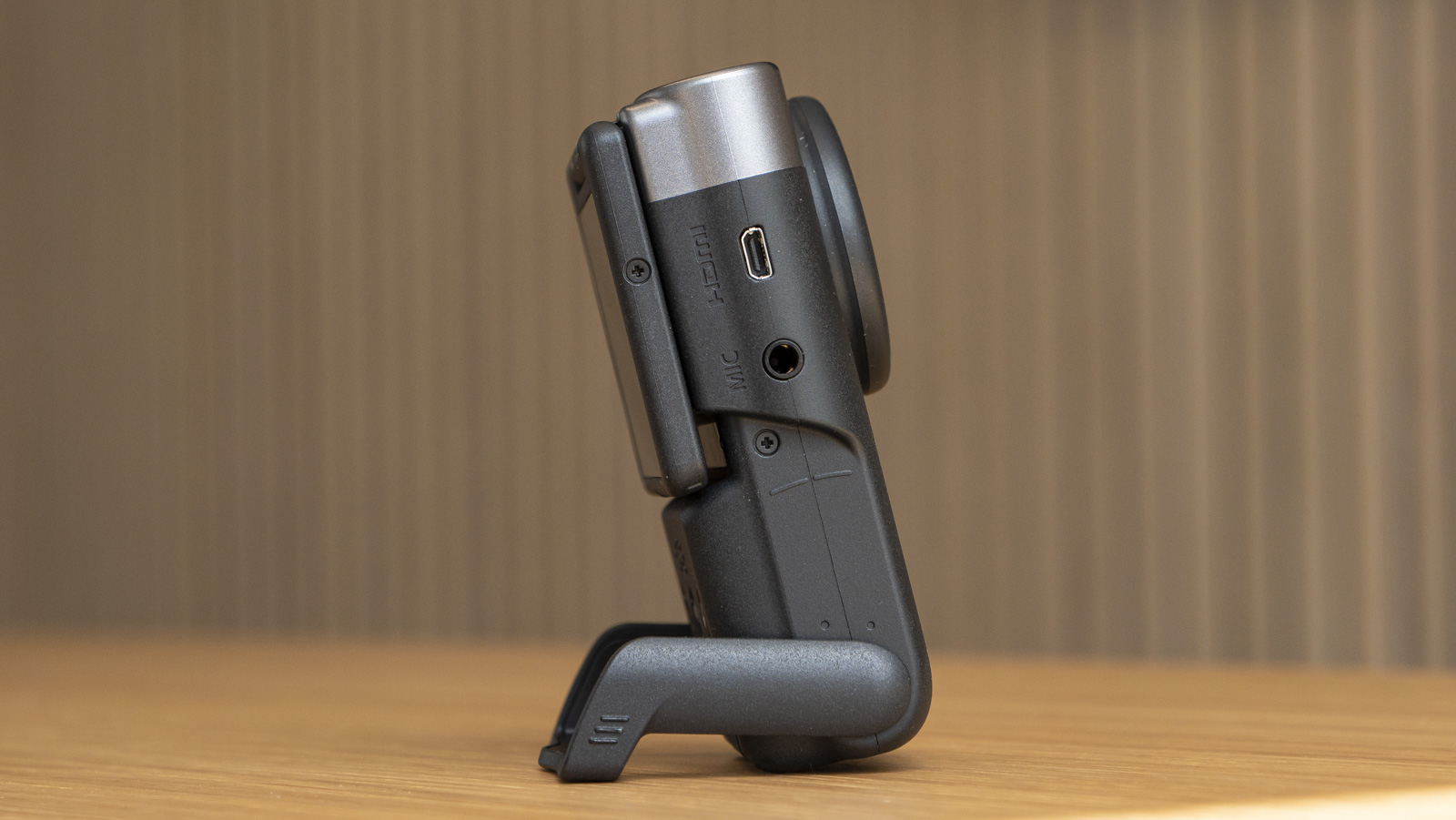
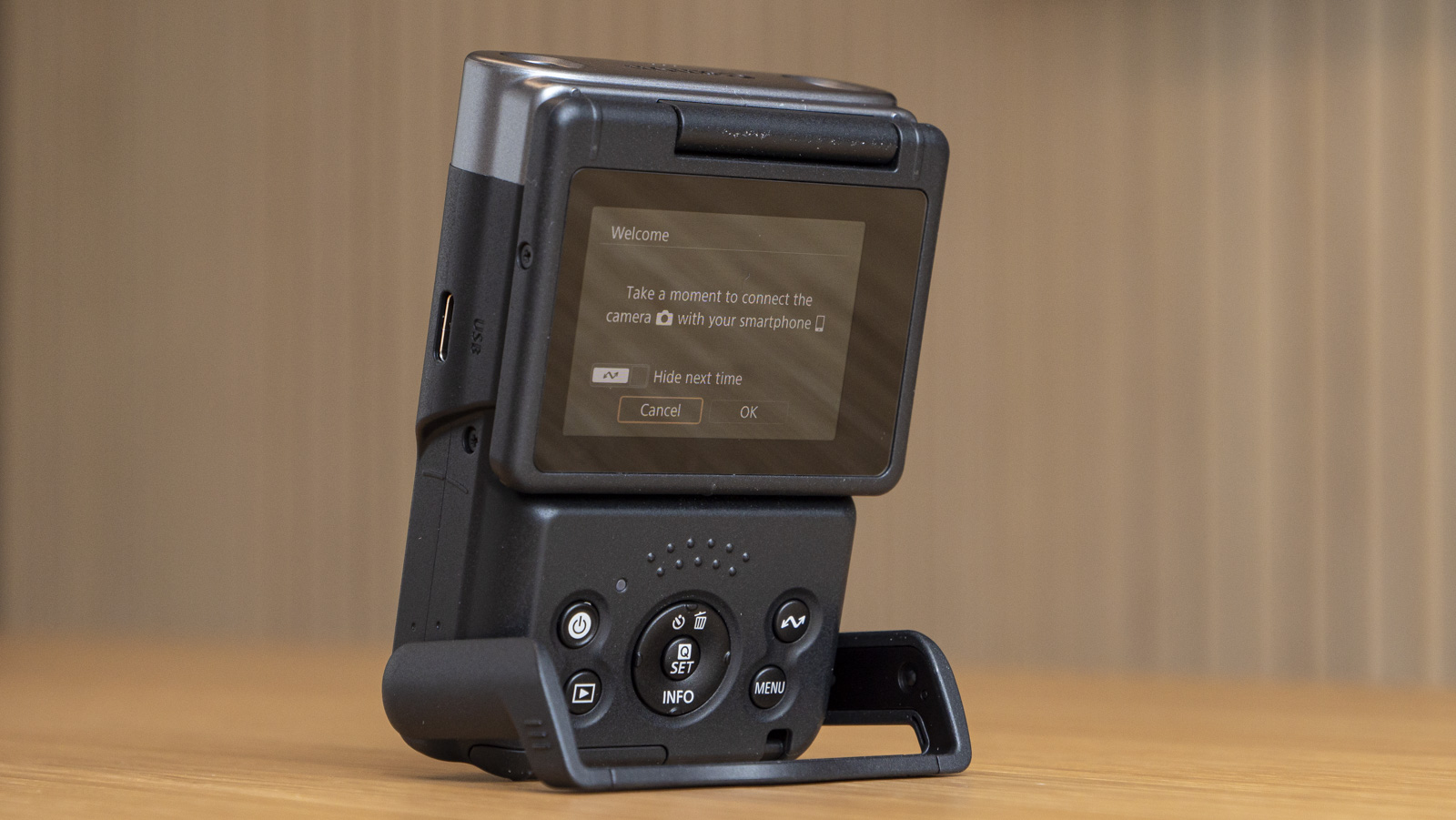
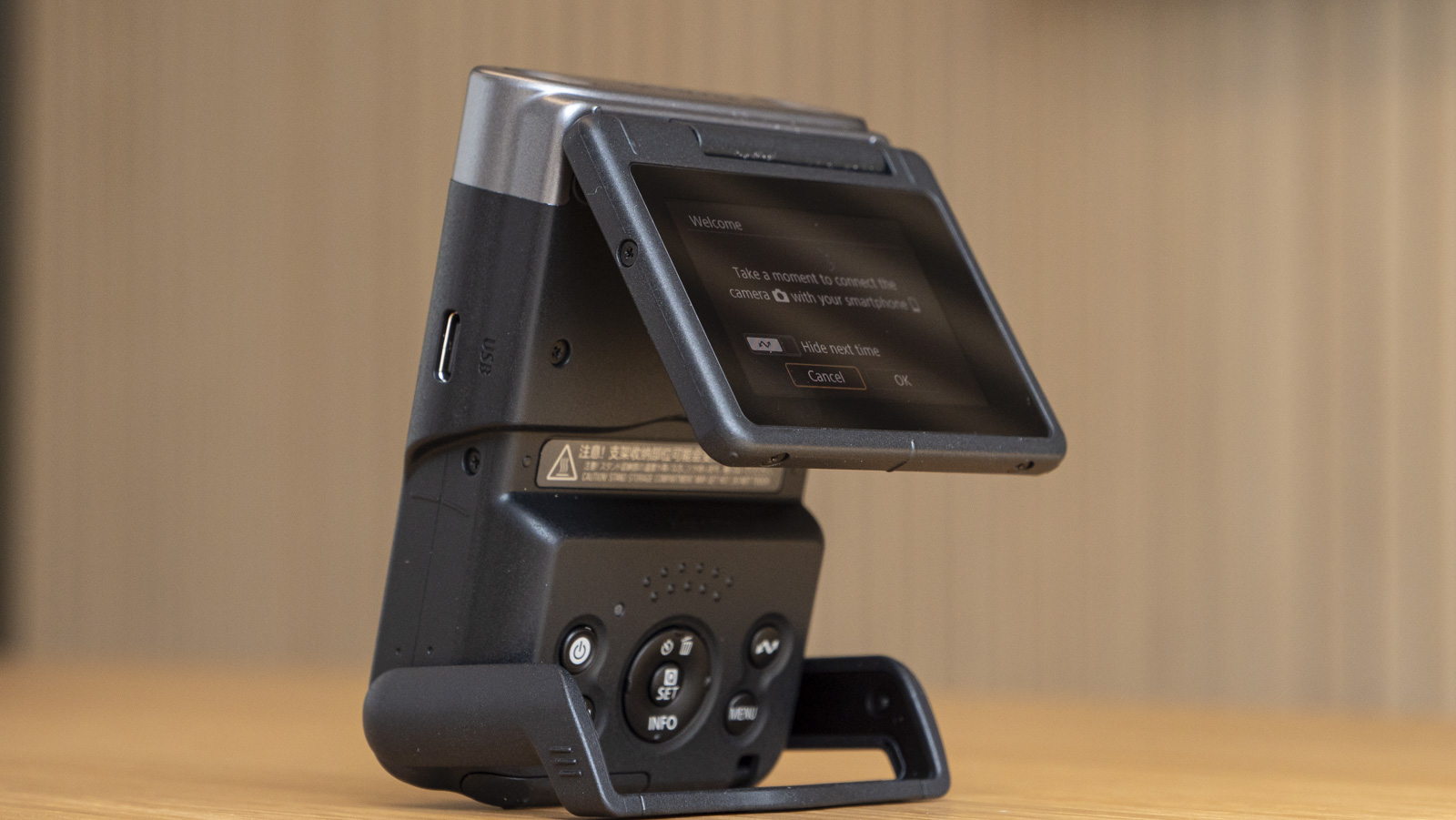
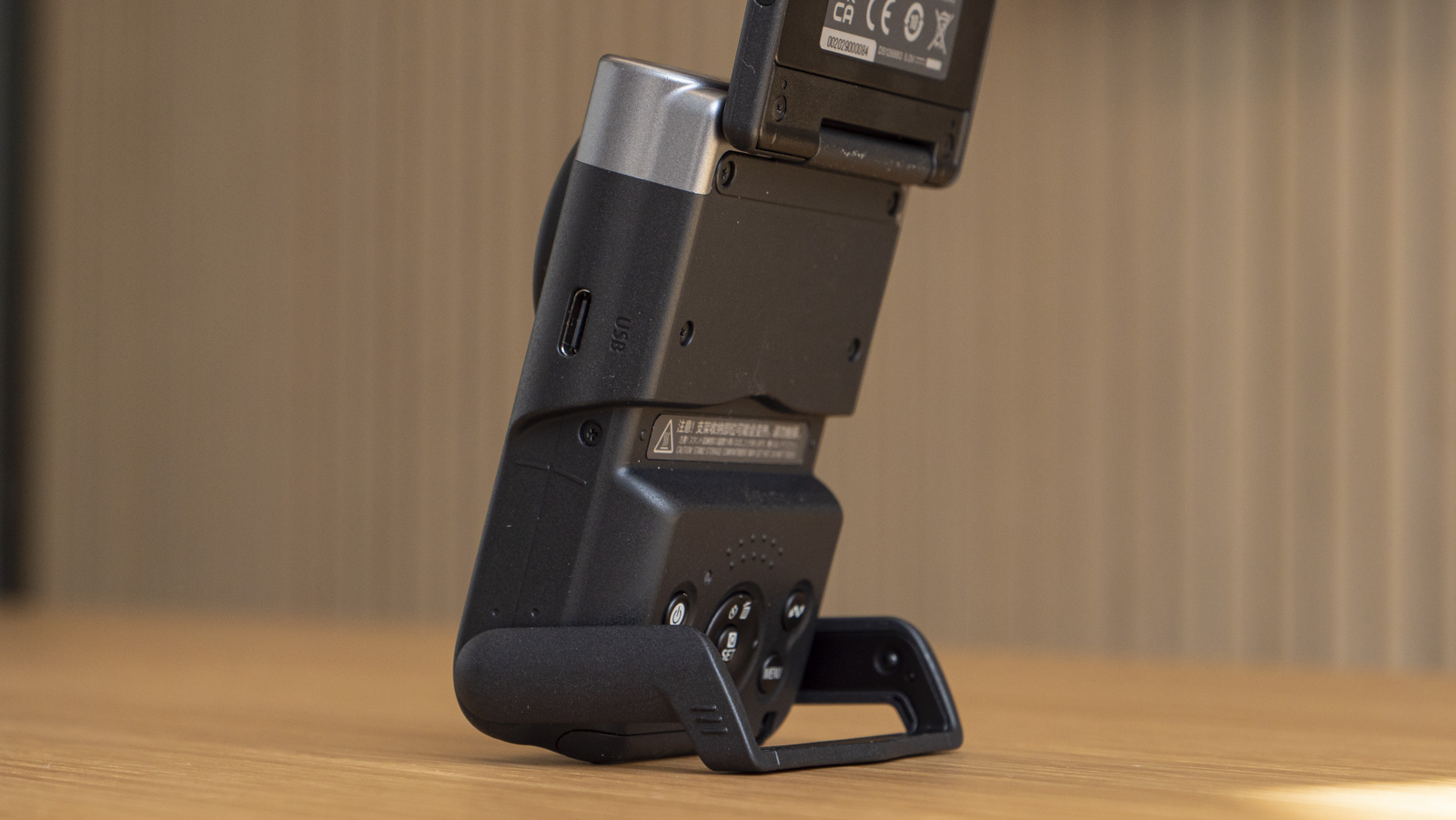
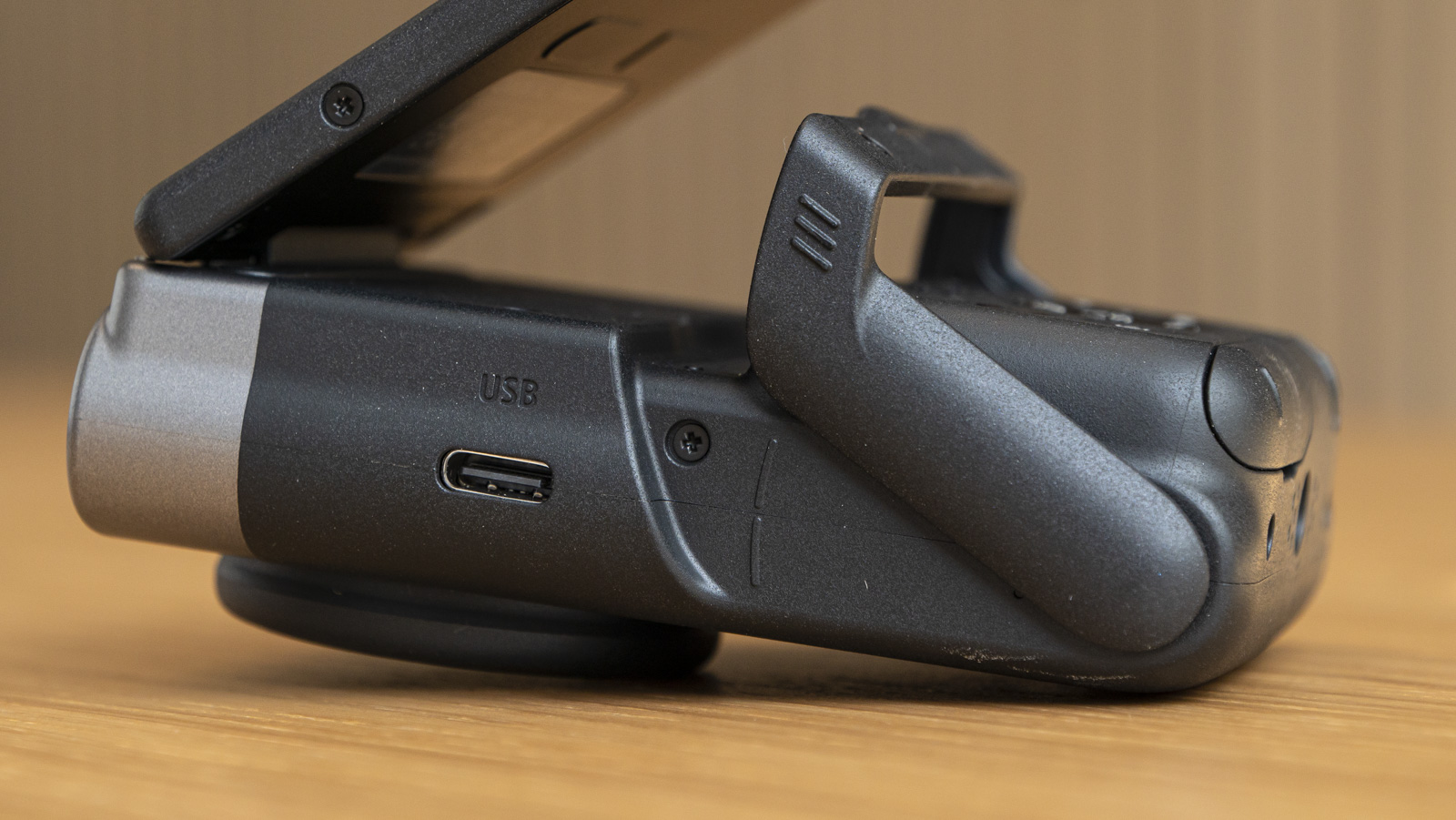
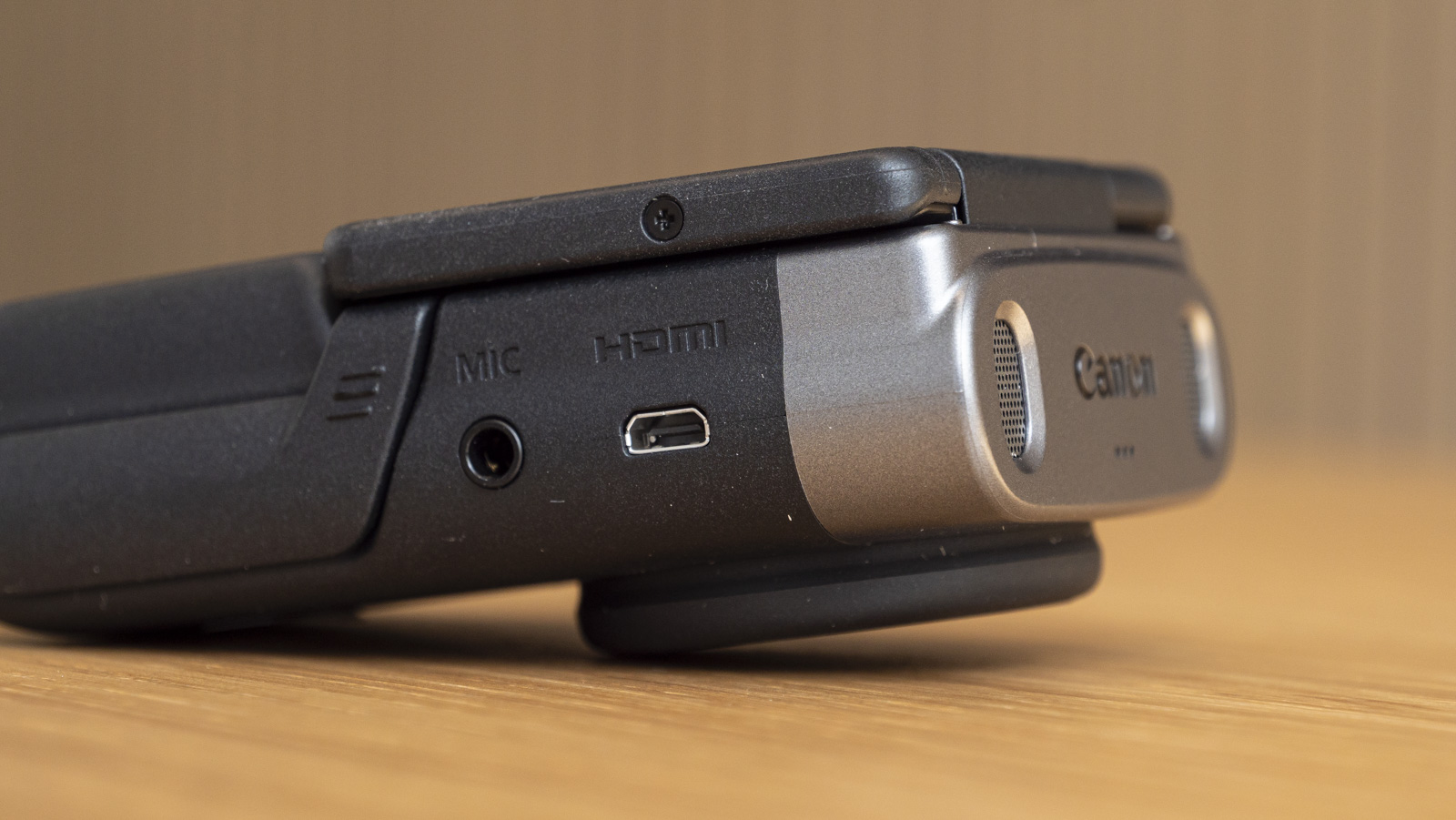
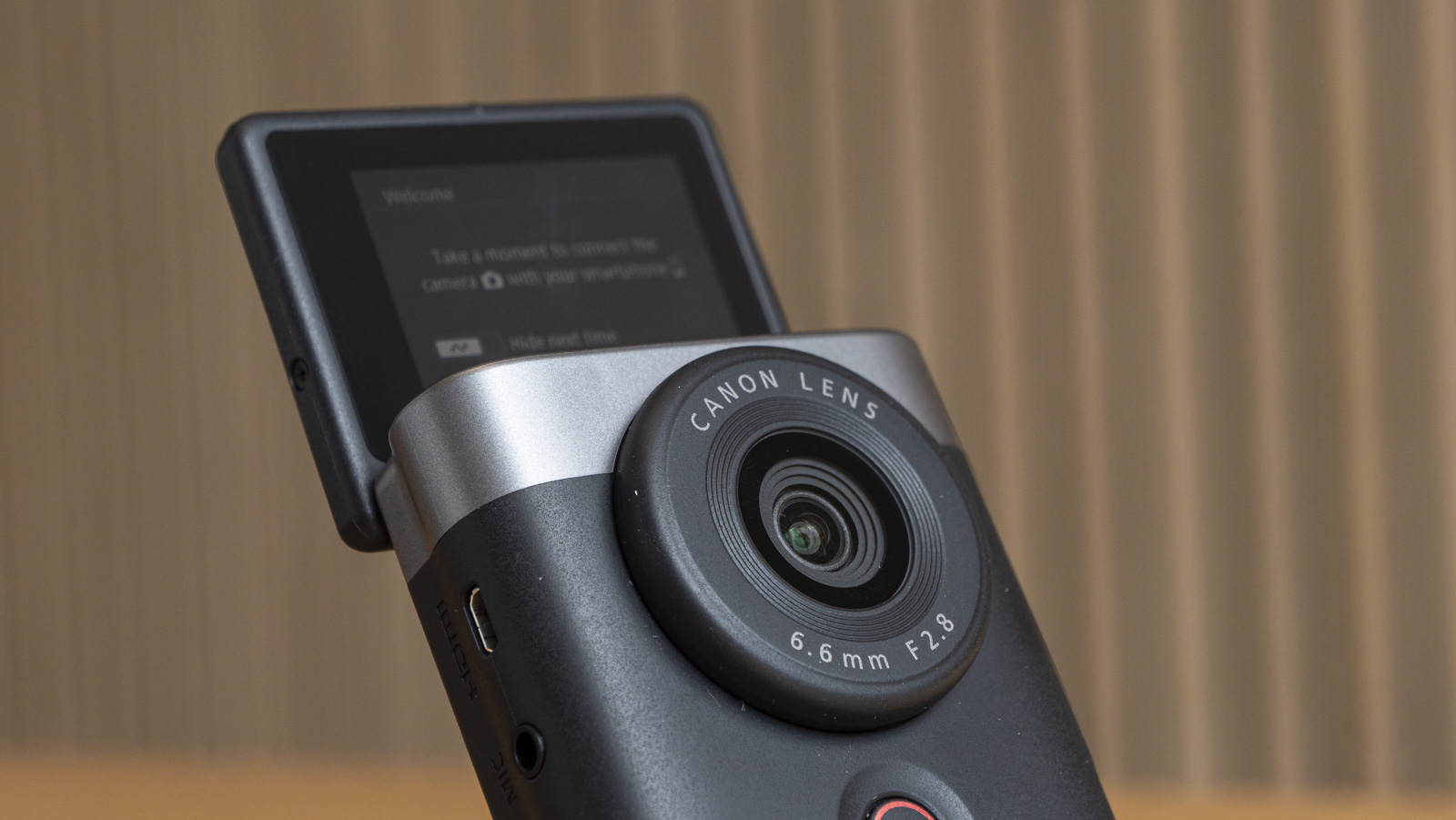
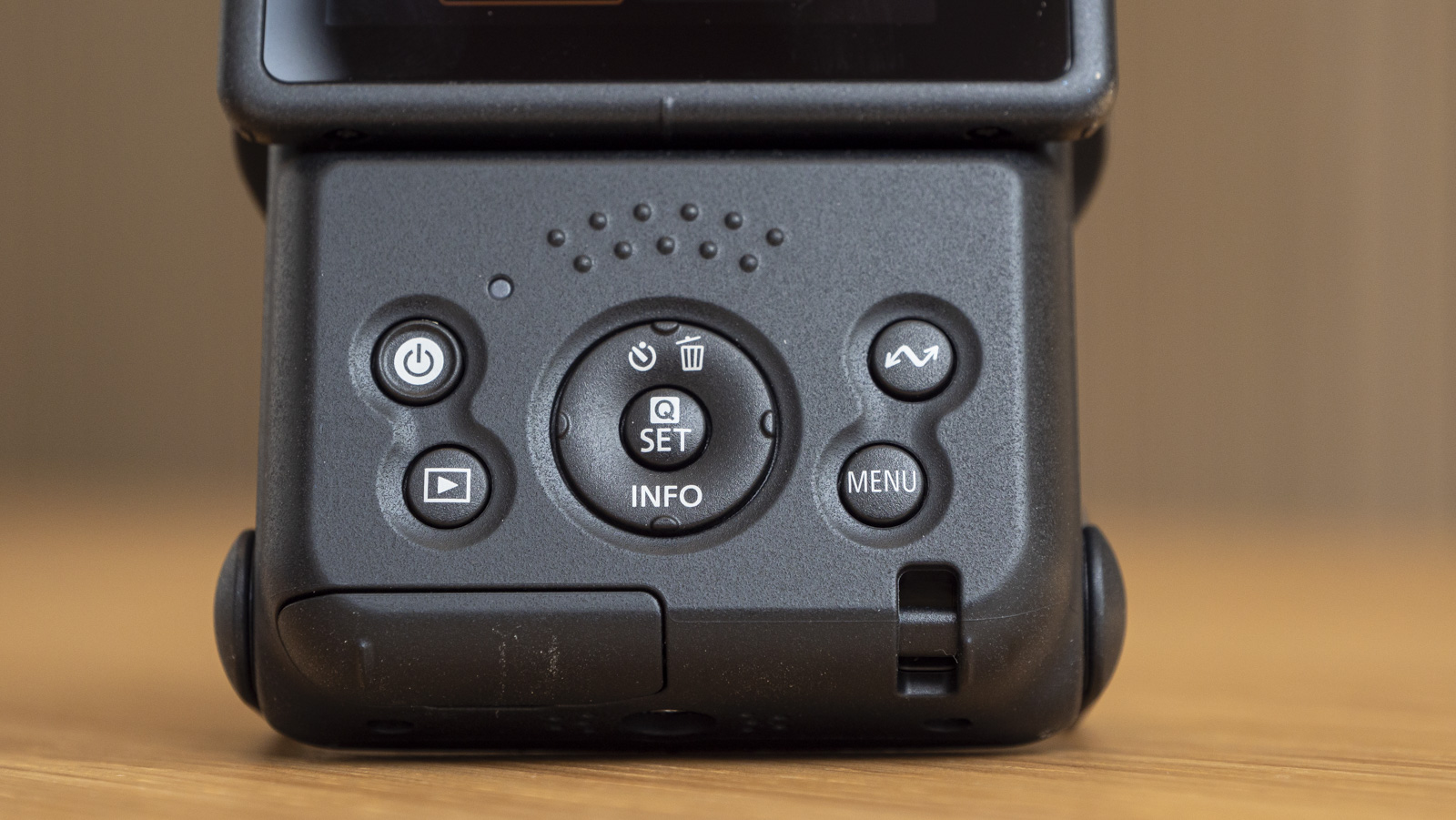
There’s also a direct button to switch to photography mode. Ultimately, most shooting scenarios have quick access and there’s little need to delve into the menus. If you do decide to explore the menu further, it’s pleasantly stripped back, with very little to navigate.
Audio-wise, there are omnidirectional stereo microphones on the top of the camera, but there’s no option to isolate sound from any particular direction, unlike on a camera like the Panasonic G100, which can single out front or rear audio, and even use face detection to automatically select the best audio setup. No, the tech in the V10 is much simpler.
Most people who want to improve the quality of audio on a camera like the V10 via its 3.5mm mic input would go down the lavalier mic route. While it’s far from ideal, it’s possible to clip a lavalier mic remote transmitter to the flip-up screen, or customers in Europe can fix the optional cage to the camera, which features a couple of tripod threads that could in turn hold such accessories.
An auto wind filter is present, but on windy days the optional windshield accessory will improve audio quality more. Sadly, the design of the camera has not been fully thought through to take account of such accessories – the windshields block at least half of the flip-up screen in selfie mode.
With foresight, perhaps the flip-up screen could also be designed in such a way that it could be pulled up to a more elevated position from the body when in selfie mode. Windshields or not, I’d like to see that kind of design for easier viewing.
Windshields are not the only optional accessories that are poorly implemented. The cage (which has a mediocre build quality, especially the lock), blocks the grip of the fold-out stand, making it much more difficult to use the stand at all.
The V10 does have an action camera look and feel about it, but don’t go jumping into the water with it – there’s no weather sealing. That said, for shoots where the camera could get splashed or dirty, I would prefer to risk spoiling the V10 than my smartphone.
After a brief time using the V10, it’s clear that the lens attracts dirt and smudges. And with the tiny camera in-pocket and ready for action, I would also pack a lens cloth to give the lens a quick clean before recording each time.
These niggles aside, the V10 design makes content creation life as easy as possible. It’s refreshingly different, and purpose-built for the job.
Canon Powershot V10: features and performance
- Same 1-inch sensor as Powershot G7 X III
- One hour battery life
- Digital image stabilization only
Inside the Powershot V10 is the same 1-inch sensor that’s in the Canon Powershot G7 X III, although that camera features a zoom lens, and the sensor here has been optimized for the ultra-wide lens.
If you’re not familiar with the G7 X III, it was a compelling option for vlogging when it was launched – but that was four years ago, and we’re getting essentially the same tech in the V10, in a world where smartphone cameras have rapidly advanced.
Stills-wise, the sensor has 20MP and can shoot in JPEG format only. The V10 is geared for video content, though, and to that end offers 4K video up to 30fps (and up to ISO 3200) and full HD video up to 60fps (and up to ISO 6400). In 2023, those recording options are the bare minimum we would expect.
Files are stored on a microSD card – a storage typically used by older and more basic cameras and phones. If you're trying to shoot the highest-quality 4K video, your record times will be hamstrung unless you insert the highest-performing microSD card available.
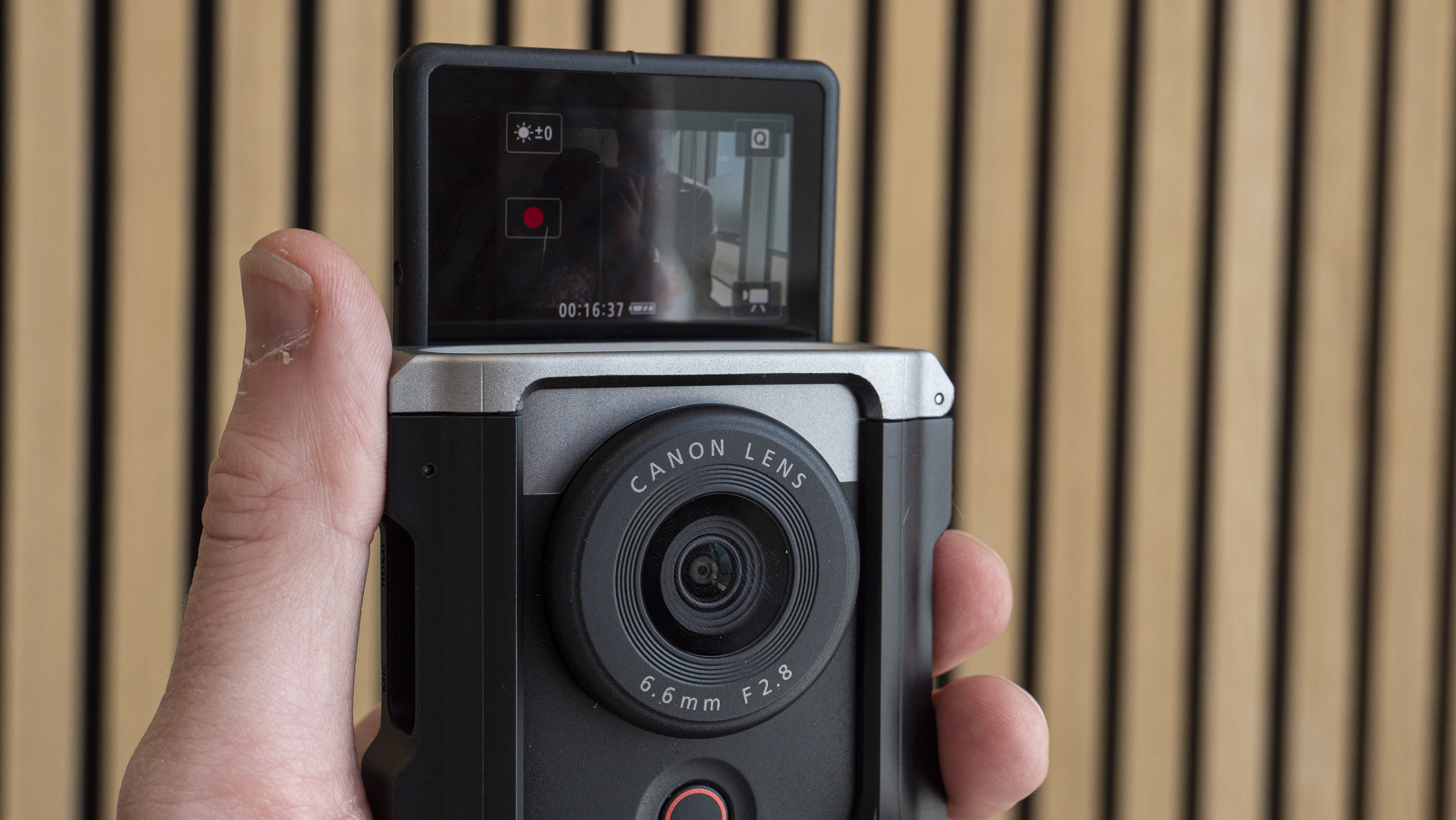
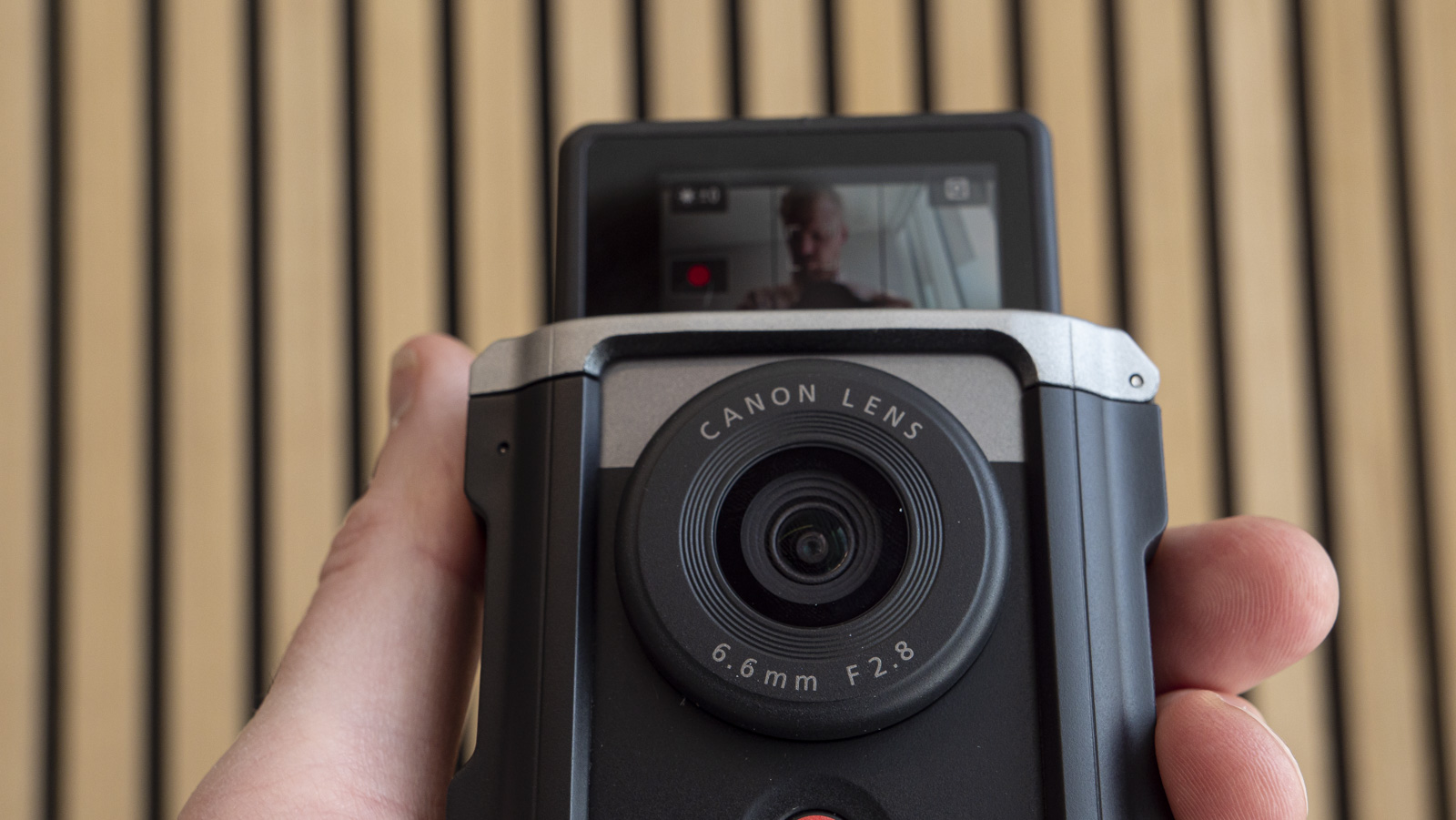
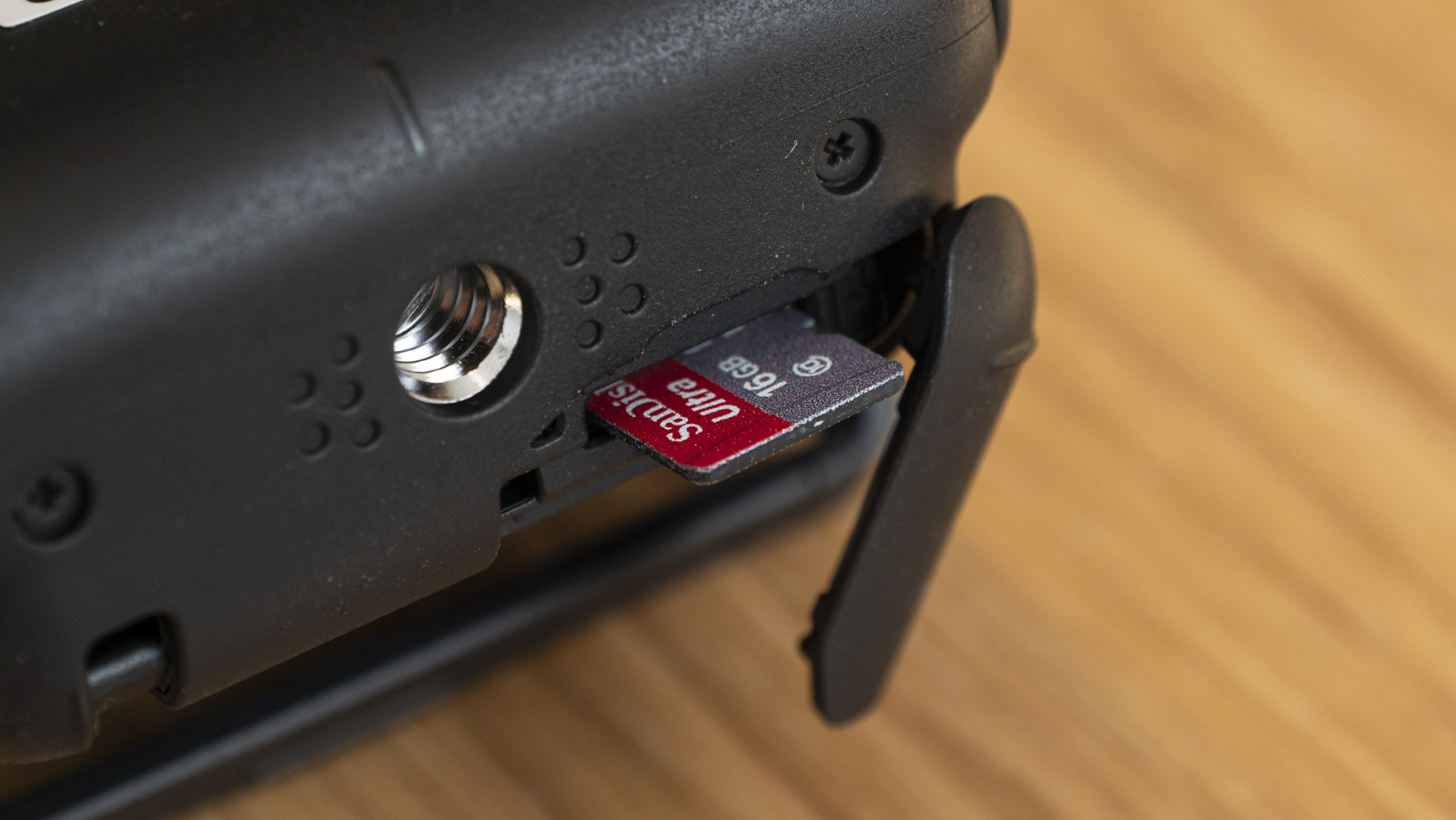
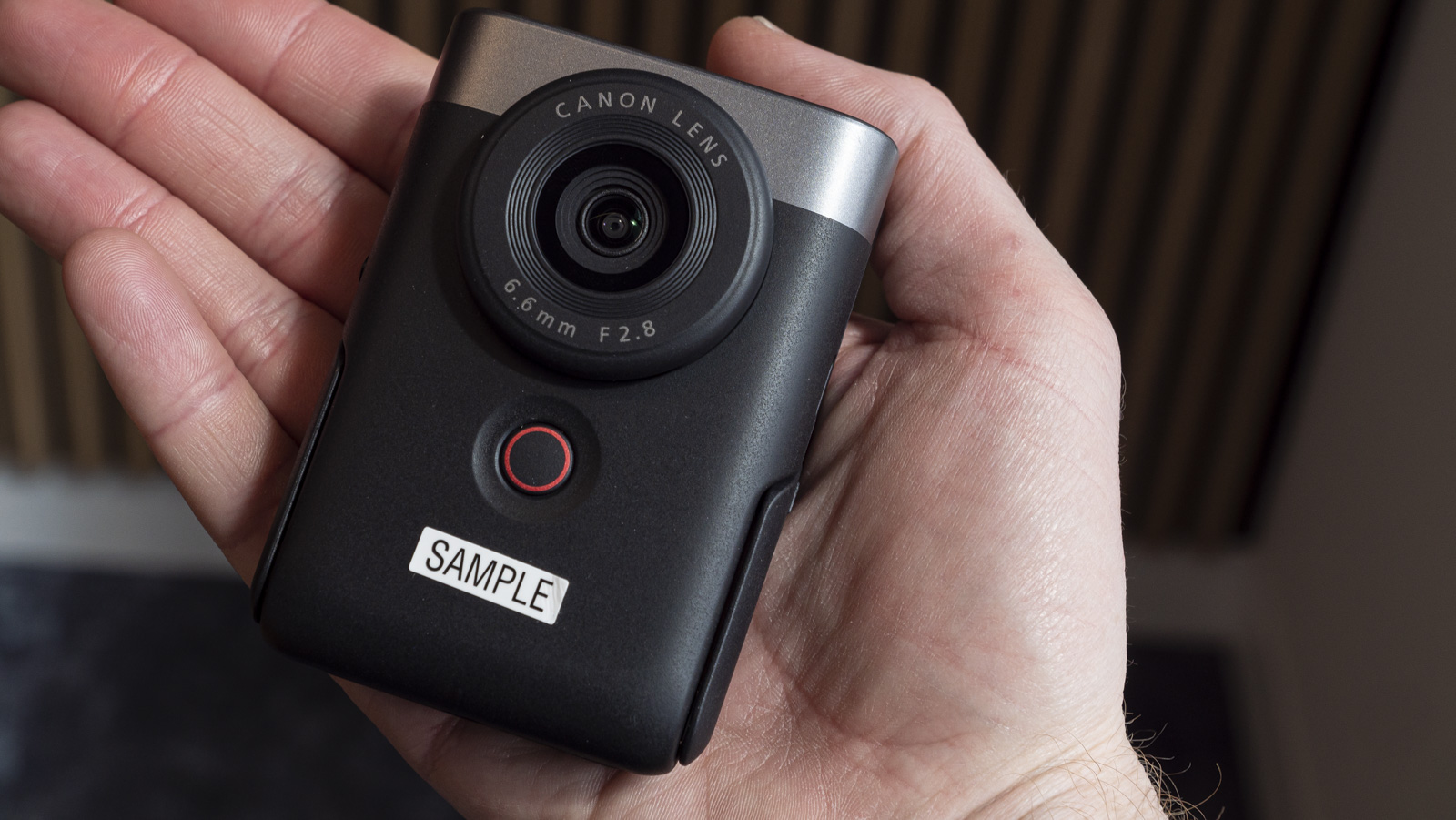
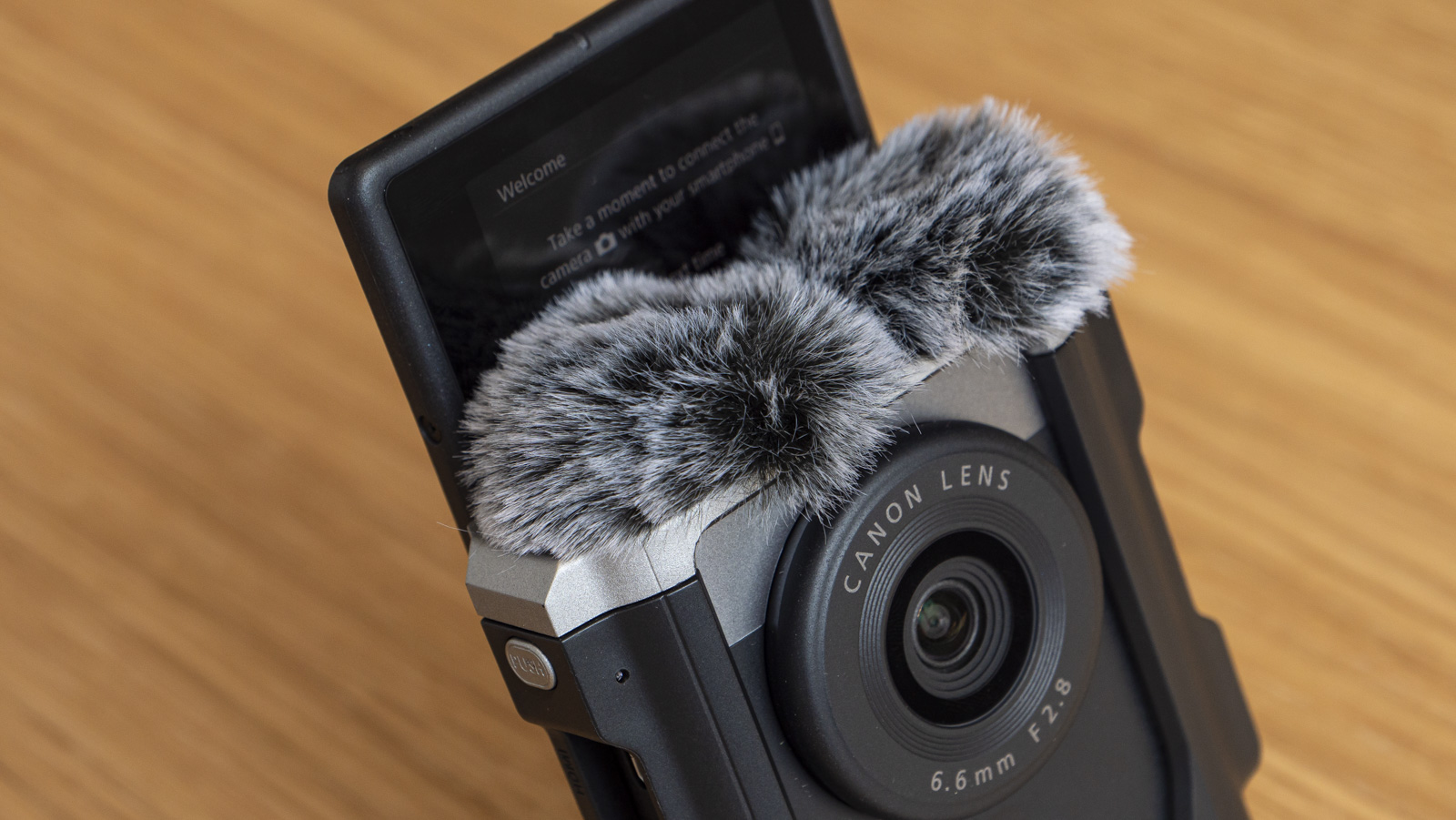
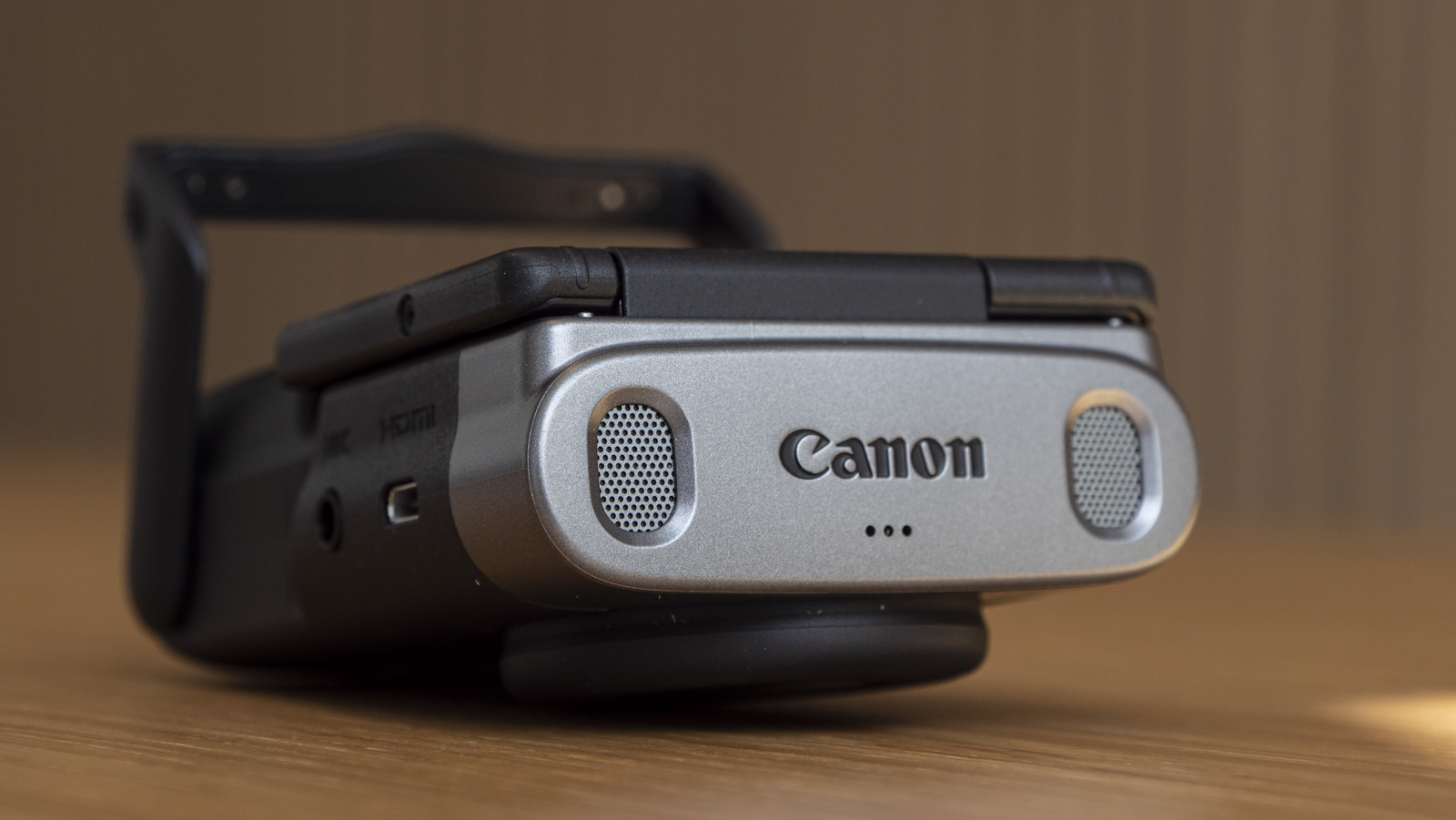
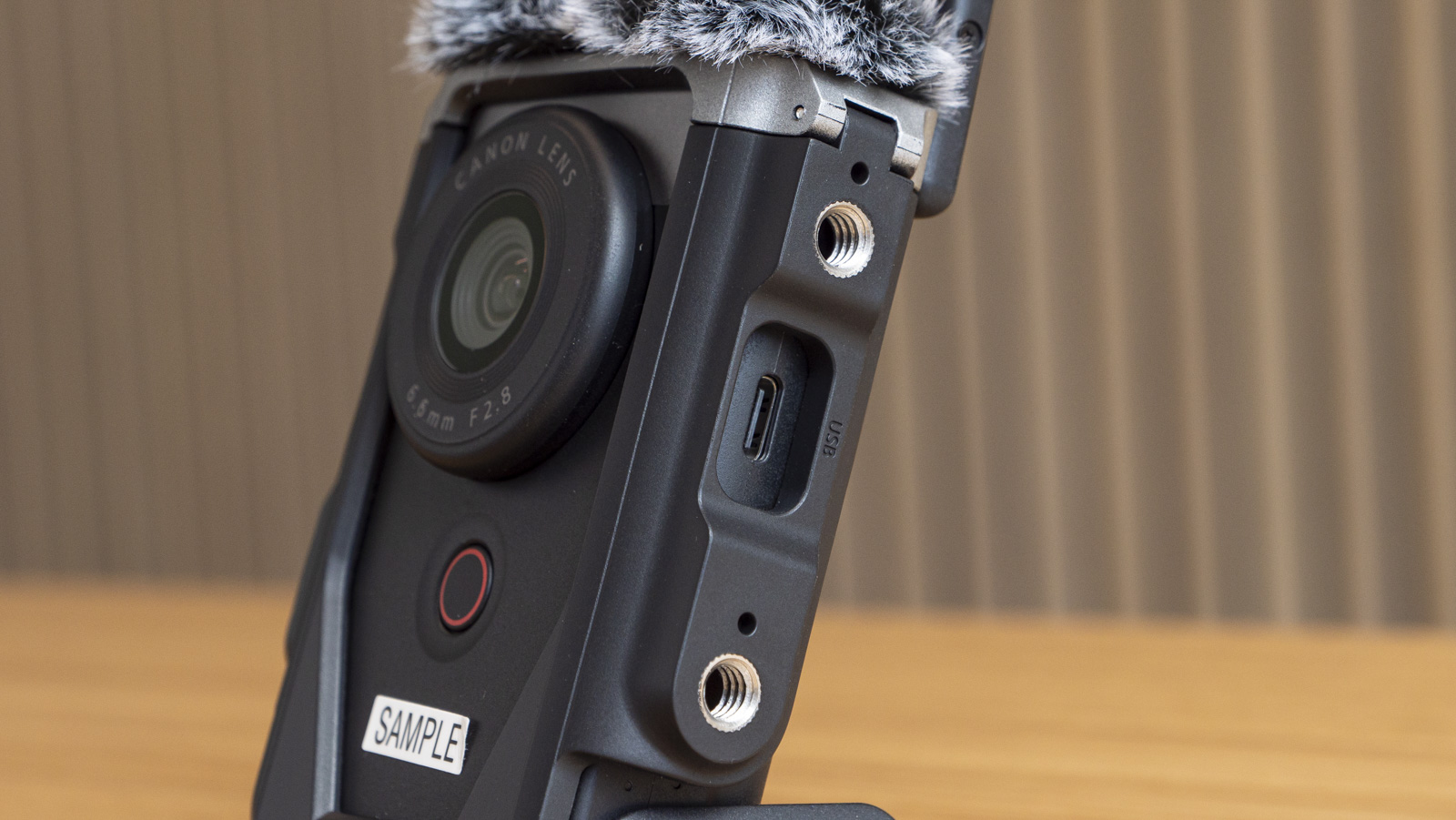
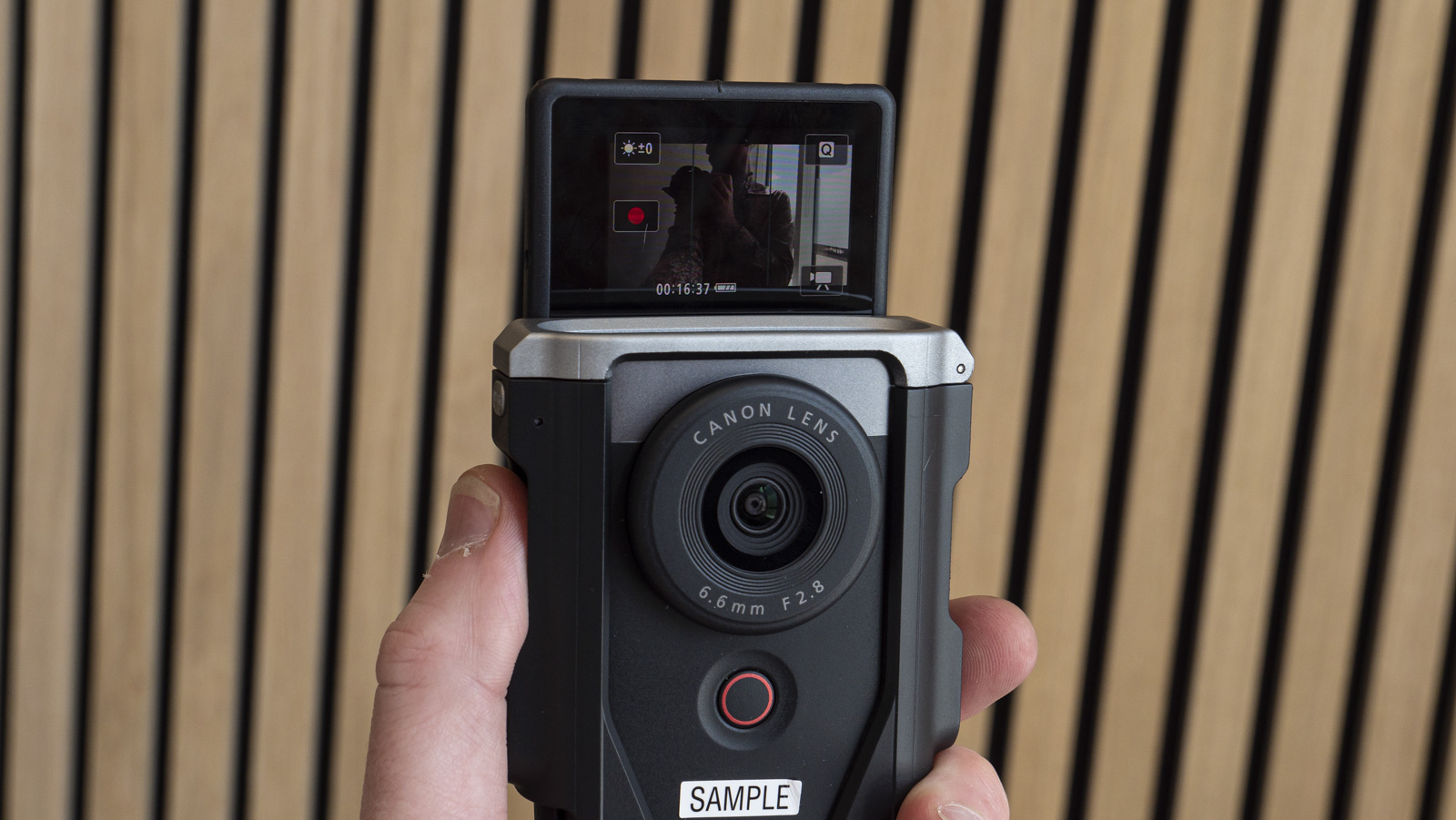
Battery life is about one hour of recording time, and the V10 is charged over USB-C. It’s possible to charge the camera while recording, say via an attached power bank.
Naturally, a camera designed for vlogging needs to be able to livestream, and the V10 offers a relatively headache-free wireless streaming experience via the Canon Camera Connect app. Set-up takes a few minutes – you’ll need to select the right camera option in order to get all the options available to the V10 – and then you’re ready to connect to Facebook, YouTube and other platforms in Full HD, with 6Mps and 3.5Mbps options.
For those on the move with the V10, there’s digital image stabilization. It’s less effective than in-body image stabilization, and as already mentioned imposes a small crop of the image area. From a brief look at handheld walking videos shot with the V10, its digital IS is a little jittery, but certainly smoothes out some of the vibrations caused by footsteps.
Canon’s face- and subject-tracking AF is implemented, and for the simple situations in which I’ve used the camera so far, like selfie shooting, it’s proven to be sticky and reliable.
Canon Powershot V10: image and video quality
- JPEG-only 20MP stills
- Sharp ultra-wide lens
- Canon’s accurate color science
A 1-inch sensor is larger than the majority of sensors found in today’s smartphones, and so the V10 has a natural advantage when it comes to image and video quality, especially as the camera also benefits from the same color science as Canon’s EOS R mirrorless cameras.
You can keep settings at auto and pictures will look lovely. Should you wish to get creative, there are 14 different color filters that can be applied to photos and videos, all of which are ready to go, as opposed to flat profiles that maximize tonal detail for editing later.
The 20MP (5472 x 3648 pixel) images pack a decent amount of detail, and the lens is sharp, with little fall-off in the corners, which is impressive given how wide its field of view is. There is some barrel distortion, which is to be expected with an ultra-wide lens, but it’s nothing distracting, and is minimized by automatic JPEG processing. In short, detail in bright conditions looks clean.






There’s no option to shoot in raw format, which allows for more extensive exposure corrections than compressed JPEG files. For instance, auto errs on the side of overexposure, and there can be some clipping in bright highlights like white clouds, which is hard to recover.
Video-wise, the aspect ratio can be set to 16:9 or 9:16, and skin smoothing can be applied in varying degrees of strength depending just how vain (or self-conscious) you are. There’s also a built-in ND filter that can regulate exposure when moving between bright and dark environments.
Despite manual exposure being available, overall, this is a camera that’s best left to create at the click of a button, with minimal fiddling around with settings.
Please note that the sample images and videos taken indoors were shot with a beta version of the Canon Powershot V10.
Canon Powershot V10 early verdict
From a features and performance perspective, the Canon Powershot V10 can’t compete with the most recent vlogging alternatives, with the most natural competition being the Sony ZV-1F; the tech inside the V10 is more dated. However, what you do get is a completely different user experience – and that is where the V10 begins to make more sense.
This is a purpose-built vlogging camera, stripped back and simple to use, straight out of the box. The fold-out stand makes a lot of sense, as does the form factor. However, the V10 does feel very much like a first-generation camera, and there are a fair few design improvements that we’d like to see implemented should a successor be in the pipeline.
0 comments:
Post a Comment